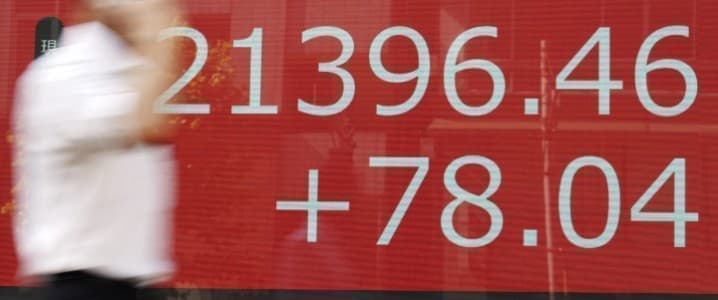Oil prices fell sharply last week, but the U.S. stock market managed to snap a four-day losing streak after President Trump promised that Congress would deliver "...the best stimulus package you've ever seen" after the November 3 elections.
Congress failed to reach an agreement on $2 trillion economic or health care relief measures before the elections break, with POTUS casting the blame on House Speaker Nancy Pelosi for the letdown.
With hopes for a pre-election stimulus package dashed and the second wave of Covid-19 infections sending several countries into a fresh round of lockdown, the market went on a sharp selloff that sent the S&P 500 down 7% and the Dow Jones deep into negative territory.
But don't let a sucker rally fool you: The risk of another market crash remains high with volatility levels still spiking.
The worrying trend is that traditional safe havens such as gold and silver have failed to respond to the selloff—and to plunging oil prices—the way they did during the March crash.
After hitting an all-time high of $2,066 per ounce in August, gold prices have been pulling back and currently trade at $1,880 per ounce, representing a 9% decline from the top.
Treasury bonds have performed dismally since the March crash, with the pandemic having rendered government bonds virtually obsolete as an effective hedge against market volatility. The 10-year U.S. Treasury yield plunged to record lows in March and has since then failed to break above 1%.
Things have not been much better for the usually dependable U.S. dollar, with the Dollar Index—a metric that pits the greenback against six major currencies—having declined from 103.5 in March to 93.8 currently. The dollar was the world's most popular safe haven during the March meltdown. Related: This Huge Gas Field Is Critical To Russia’s Middle East Agenda

Source: CNN Money
Here are three ways to foolproof your portfolio and provide a measure of downside protection.
#1. American Customer Satisfaction ETF
AUM: $66.2M
Expense Ratio: 0.66%
YTD Returns: 9.48%

Source: CNN Money
When ExponentialETFs CEO Phi Bak launched the American Customer Satisfaction ETF (ACSI) four years ago, his core investment thesis was the idea that companies with above average customer satisfaction scores tend to outperform their peers over the long term.
So far, ACSI appears to be proving this thesis right, having held up better than the market during the pandemic. ACSI boasts year-to-date returns of 9.5% vs 2.0% by the S&P 500. Including dividends, ACSI total returns over the past 12 months clock in at 12.3% vs. 10.4% by S&P 500.
The American Customer Satisfaction ETF is based on the American Customer Satisfaction Index. As such, the ETF mainly holds household names that many people can easily recognize. ACSI is made up of more than 400 companies across 46 industries and 10 sectors. Its top 5 holdings are:
- Amazon Inc. (NASDAQ:AMZN)--9.83%
- Apple Inc. (NASDAQ:AAPL)--8.49%
- FedEx Corp. (NYSE:FDX)--4.83%
- Procter & Gamble Co (NYSE:PG)--4.48%
- Southwest Airlines Co (NYSE:LUV)
#2. Innovator S&P 500 Power Buffer ETF
AUM:$96.3M
Expense Ratio: 0.79%
YTD Returns: 6.91%
Many income investors prefer to buy stocks that allow them to enjoy market gains while providing a good measure of downside protection when the markets become choppy. Buffer ETFs are designed to do exactly that.
Buffer ETFs are defined as defined-outcome ETFs designed to provide investors with a buffer against market losses, with the tradeoff being a cap to potential gains.
The Innovator S&P 500 Power ETF(PJUN) is a buffer ETF launched and managed by Innovator Capital Management, LLC. The ETF offers protection against losses up to 15%, but caps gains at 10.52% gross gains (9.73% net of fees).
PJUN holdings break down as follows:
- Tech sector--21.63%
- Healthcare sector--12.07%
- Financials--11.00%
- Consumer Cyclical--9.61%
- Communication--9.53%
- Industrials--7.14%
- Consumer Defensive--7.29%
- Utilities--2.43%
- Real Estate--2.24%
- Energy--1.99%
- Basic Materials--1.87%
#3. Innovator S&P 500 Ultra Buffer ETF
AUM: $31.57M
Expense Ratio: 0.80%
YTD Returns: 4.82%
The Innovator S&P 500 Ultra Buffer ETF (BJUN) is another buffer ETF by Innovator Capital Management.
Just like PJUN, BJUN offers a measure of downside protection at the expense of gains. However, it employs a different strategy since it is a range-style buffer designed to protect against losses greater than 5% but less than 35% while capping the upside at 10.26% gross (9.47% net of fees).
Here's a breakdown of the BJUN's sector weightings:
- Tech sector--22.13%
- Healthcare sector--12.35%
- Financials--11.25%
- Consumer Cyclical--9.83%
- Communication--9.75%
- Industrials--7.30%
- Consumer Defensive--6.43%
- Utilities--2.43%
- Real Estate--2.49%
- Energy--2.04%
- Basic Materials--1.91%
By Alex Kimani for Oilprice.com
More Top Reads From Oilprice.com:
- Oil Investments Are Drying Up As Crude Demand Falters
- Could Fracking Help Save Colombia’s Oil Dependent Economy?
- China Believes Natural Gas Demand Will Soar


















